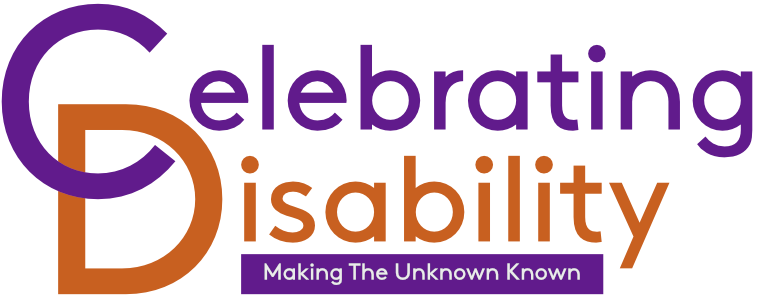
Increasing Disability Inclusion at Historic England
Responsible for protecting, championing and amplifying the UK’s sites, monuments and landmarks, Historic England developed their confidence and knowledge of disability in the workplace over a course of 30 training sessions

- 3
- Unique content sessions
- 94%
- Delegate attendance
- 186
- Said they implement learnings
Between January and May 2022, Celebrating Disability delivered thirty training sessions for Historic England, with a goal to increase their staff awareness of accessibility and disability inclusion in the workplace. Through three engaging, well-attended sessions, employees at the heritage organisation gained an improved understanding of disability inclusion. Employees also reported gaining the confidence to immediately implement actionable steps towards making the organisational culture more inclusive.
The Background
In November 2020, Historic England released its first ever ‘Equality, Inclusion and Diversity’ Strategy. The report outlined its intended action steps across three areas: ‘Our Work,’ ‘Our People’ and ‘The Historic Environment.’
Encouragingly, the report showed that in recent years Historic England has improved disabled representation across both its work and workforce. Projects like Disability in Time and Place have brought visibility to disability history in relation to the historic environment. Meanwhile, apprenticeship opportunities have received a ‘greater proportion of applications from disabled people’, thanks to targeted recruitment and community outreach.
However, the report concluded that there was still much work to be done. Historic England acknowledged that “attracting a diverse workforce is about more than recruitment,” but creating an inclusive working culture where “everyone is treated with dignity and respect.” The report illustrated that although the percentage of people who have formally disclosed that they have a disability has increased from 3.6% to 4.4% since Historic England’s last survey, this is in contrast to the 9.7% of staff who disclosed a disability in their anonymous 2019 Staff Survey, and the 16% of working age adults with a disability in the UK.
The report also summarised results from the DCMS Taking Part Survey, which records participation and engagement in heritage. The DCMS survey found that there was still a participation gap between adults with a long-term illness or disability and those without: while 69.6% of disabled adults participated in heritage in 2018/19, 73.6% of non-disabled adults participated in the same period.
These findings mobilised Historic England to improve its accessibility and to increase the representation of disabled people across its workforce and audiences.
Our Successful Proposal
After meeting with Historic England to understand their desired goals and outcomes, Celebrating Disability constructed a proposal outlining how the training sessions would meet these goals. Historic England assessed our proposal against their strict scoring matrix and concluded that we were the most suitable suppliers.
One thing that stood out to Historic England was our dynamic use of technology to deliver interactive sessions, and they appreciated that we were not only “fresh and dynamic”, but “reactive to the audience.” Crucially, we appealed over our competitors because we are user-led and provide an authentic pan-disability perspective.
Our Founder and Managing Director Esi Hardy and diverse team of Associates all have lived experience of disability, which is essential to making the concepts in our training tangible. This authenticity was later noted in the post-session feedback we received from participants, many of whom highlighted the “real life examples” and “lived experience” as “most useful.” One participant even cited our sessions as “the first [training] I have been on that has been delivered by a person that has personal experiences of the barriers in society.”
Increasing disability awareness through interactive workshops
The training sessions ran between January and May 2022. During this time, we delivered three different sessions:
- Inclusion
- Supporting Disabled Employees
- Accessibility and The Built Environment
The sessions were highly interactive and encouraging of discussion, and the atmosphere was described by participants as “open,” “welcoming” and “chatty.”
‘Fundamentals of Disability Inclusion’ provided an invaluable introduction to disability inclusion. Esi introduced her participants to the Social Model of Disability and explained how this framework enables an inclusive mindset. We discussed terminology and language and provided an overview of important legislation. We also helped participants to understand the distinction between accessibility and inclusion, which are all too often understood as interchangeable. At first, a couple of the participants felt “unsure of how to be inclusive and/or afraid to do so, and also afraid of messing up”, but as the session unfolded, they quickly realised that “This was a safe and friendly environment” to explore topics that they previously may not have had an opportunity to discuss openly.
‘Supporting Disabled Employees’ focused on better including Disabled people in the workplace. We discussed recruitment processes and reasonable adjustments, and carefully considered sensitive topics like disability disclosure and self-identification. One participant felt that the conversation had encouraged them to “become a better advocate” and another participant who works in HR said: “This has helped me start thinking about so many ways we can support our colleagues with disabilities to work at their best and create an open and inclusive culture where people feel comfortable having these conversations with us.” Participants were also introduced to examples of actionable steps they could immediately put into place to make their organisational culture more inclusive. 84% of attendees rated the facilitation as “excellent” and 95% described the session as “very valuable” or even “game-changing” to their role.
Meanwhile, ‘Accessibility and The Built Environment’ was described as “a really good overview of what accessibility in the built environment is and means, why it’s important and ways in which it can be improved.” With images and real-life examples, Esi introduced the theory of accessibility in design. The training session armed participants with practical advice, and 70% of participants reported afterwards that they felt able to “immediately implement ideas into [their] work.”
Building disability confidence with actionable steps
Between January and May, a total of 340 employees at Historic England booked a place on our training sessions, and 94% of people who had booked ended up attending at least one session. This meant that 265 individuals attended between one and three session, across a total of 30 sessions. Almost all our participants reported gaining significant benefit from attending.
Our training gave our participants a greater sense of confidence. There is still a significant cultural taboos surrounding disability, but the “friendly” and “open” atmosphere of our sessions gave participants the confidence “to think out loud and express how sensitive and complicated this stuff sometimes feels.” Our post-session feedback also revealed that participants found real value in our sharing concrete, tangible examples of how they could immediately improve their organisation’s working culture. “I left feeling armed with some really achievable things to implement very quickly,” said one participant.
One participant commented: “This is a safe space to explore a challenging and wide-ranging menu of topics.” It was encouraging to find that participants were leaving our training feeling less fear around the topic of disability; better equipped to use the right language; and “less worried now about saying/ doing the wrong thing.”
There were also frequent references to our training giving participants a new sense of perspective. One person called the training “thought-provoking,” and another said it was “opening my mind to the daily challenges people face”. One participant even had a message for anyone thinking about attending our sessions: “Be prepared to look at the world differently.”
Case Studies
See more Case Studies


Providing the Foundations of Disability Inclusion

